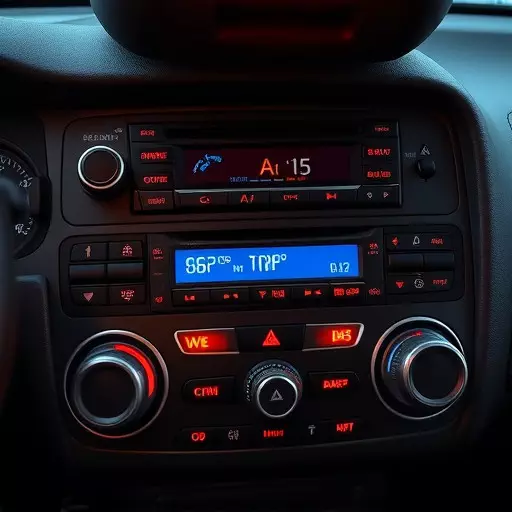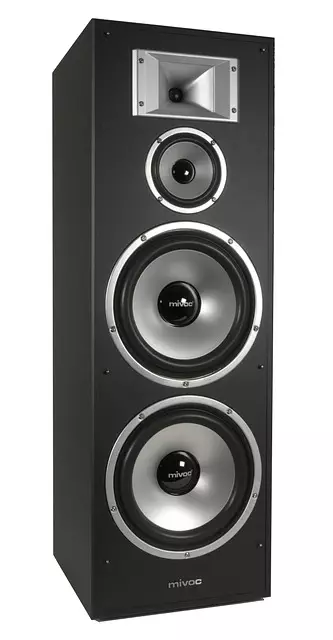Car audio system troubleshooting in Toledo involves addressing misaligned/damaged speakers, receivers, and wiring issues. Start with checking speaker connections, ensuring proper amplifier-speaker channel alignment, and inspecting the power supply for voltage stability. Evaluate external noise sources, use a signal meter to pinpoint interference, and fine-tune calibration settings for clear sound. Regular cleaning and upgrades enhance audio quality, eliminating static and distortion in Toledo vehicles.
Struggling with a car audio system that produces nothing but static or distortion? Don’t despair! This comprehensive guide tackles the common issue of no sound from speakers and static noise. From understanding feedback noise and its causes to calibrating your system settings, we break down effective car audio system troubleshooting steps specifically for Toledo drivers. Learn how to check speaker connections, evaluate components like amplifiers and power supplies, inspect audio sources, test for external interference, and apply useful tips and tools to restore clear audio.
- Understanding Feedback Noise and Its Causes
- Checking Speaker Connections and Wiring
- Evaluating the Amplifier and Power Supply
- Inspecting the Audio Sources and Inputs
- Testing for Interference from External Sources
- Calibrating and Adjusting System Settings
- Common Troubleshooting Tips and Tools
Understanding Feedback Noise and Its Causes

Feedback noise is a common issue that plagues many car audio systems, causing frustration among users who are left wondering, “Why can’t I get clear sound from my speakers?” It manifests as static or distortion in the audio, often accompanied by a high-pitched squeal or howl. This problem typically arises due to a variety of factors within the car audio system itself. In the case of Toledo vehicles, where car audio system troubleshooting is a common concern, misalignment or damage to the speakers and receiver can be significant culprits.
Another leading cause is excessive amplifier gain setings, which can lead to feedback when the input signal reflects back onto the output, creating a loop that amplifies noise. Poor wiring, loose connections, and incompatible components can also contribute to this issue. Additionally, environments with high levels of external noise, like highways or busy streets, can exacerbate feedback problems. Understanding these causes is half the battle in tackling no sound from speakers or static in your car audio system.
Checking Speaker Connections and Wiring

When addressing car audio system troubleshooting in Toledo, one common issue that often arises is the absence of sound from speakers or static and distortion in the audio. A simple yet effective first step is to check all speaker connections and wiring for any loose, damaged, or incorrect connections. Ensure that each speaker is securely connected to its respective amplifier channel using the correct wire colors (typically red for power, black for ground, and sometimes yellow or white for signal). Any discrepancy in these connections can lead to poor audio quality or no sound at all.
Visual inspection should be your initial check, followed by a functional test where you power on the system and verify that each speaker receives the correct voltage. If any loose connections are found, tighten them or replace damaged wires. Additionally, ensure that the speakers themselves are properly oriented in their housings and aligned with the amplifier for optimal signal reception. This basic troubleshooting step can often resolve issues of no sound from speakers and static or distortion in audio, making it a crucial part of any car audio system troubleshooting process.
Evaluating the Amplifier and Power Supply

When addressing car audio system troubleshooting in Toledo, one of the first steps is evaluating the amplifier and power supply. If your speakers are emitting static or distortion instead of clear audio, the issue could lie with these components. Start by checking connections; loose or corroded wires can cause signal interference. Ensure all cables are securely fastened and clean to prevent any short circuits.
Next, inspect the amplifier for any signs of damage or excessive heat buildup. A faulty amplifier might not be able to deliver enough power to your speakers, resulting in poor sound quality. Similarly, an unstable power supply can lead to audio problems. Verify that the voltage is within the recommended range and replace any damaged or worn-out fuses or power cables to eliminate static or distortion in your car audio system.
Inspecting the Audio Sources and Inputs

When addressing feedback noise and static in your car audio system, a crucial step is inspecting the audio sources and inputs. Start by checking the connections to your speakers; loose or corroded wires can cause interference. Ensure each speaker is securely fastened and the cables are clean and tight. Next, verify the head unit’s settings, including volume levels, equalization, and input selection, as improper configurations can lead to sound quality issues.
Inspect the audio signals at their source, such as a radio or aux input. Look for any signs of damage or loose connections to the signal cables. Check if there are ground loops by examining the grounding connections of your components. Ground loops can cause static and noise in the system. If you identify any issues, address them accordingly; cleaning or replacing faulty parts can resolve problems related to no sound from speakers or static or distortion in audio.
Testing for Interference from External Sources

When troubleshooting a car audio system in Toledo, one common issue that users often face is the presence of static or distortion in the audio. If your speakers are not producing any sound at all, it could be indicative of interference from external sources. The first step in identifying and resolving this problem is to conduct a thorough check for potential interference fields.
Start by inspecting the wiring and connections for any loose or damaged cables. Check for nearby electrical devices that might be emitting electromagnetic interference, such as amplifiers, car alarms, or even mobile phone signals. Moving parts, like window motors, can also cause interference. Utilize a signal meter to detect and quantify the levels of static or distortion, helping you pinpoint the source of the problem effectively.
Calibrating and Adjusting System Settings

When it comes to car audio system troubleshooting in Toledo, one common issue that users often face is a lack of sound from speakers or static and distortion in the audio. The first step in addressing these problems is to ensure that your system is properly calibrated and adjusted. This involves several key settings checks. Start by examining the volume levels; each speaker should be set at an equal and suitable level, avoiding any overpowering or underperforming areas.
Next, focus on the bass and treble controls. Balancing these can significantly impact audio quality. Too much bass can cause distortion, while too little might result in a tinny sound. Adjustments should be made based on personal preference and the overall acoustic environment of your vehicle. Additionally, check for any noise filtering or equalization settings that could be causing static or interference. Fine-tuning these can help eliminate unwanted audio artifacts, ensuring a clean and clear listening experience.
Common Troubleshooting Tips and Tools

When it comes to car audio system troubleshooting in Toledo, static or distortion in audio can be frustrating issues. A common cause for no sound from speakers is a simple loose connection. Check all speaker wires for secure connections at both ends and ensure they are properly routed and protected from damage. Using a multimeter for car audio system troubleshooting can help identify any faulty wiring or components, such as blown fuses or damaged amplifiers.
Additionally, consider updating your car’s audio system with newer equipment designed to minimize static and distortion in audio. High-quality speakers and amplifiers often incorporate advanced technologies that enhance sound clarity and reduce interference. Regular cleaning of speakers and receiver surfaces can also help alleviate problems caused by dust accumulation. Remember, proper car audio system troubleshooting techniques and the use of suitable tools can significantly improve your listening experience, ensuring you enjoy crystal-clear audio during every drive.


